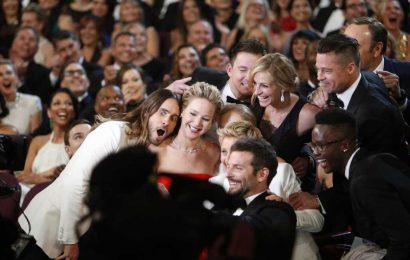The NAACP Image Awards honor performances in film, television, music and literature, recognizing excellence in more than 40 categories that the organization’s members vote on, but the annual ceremony has been unfairly labeled as “awards for Black people.” Given that, the industry and awards voters of varying groups should be encouraged to watch the awards show and see how the NAACP recognizes artistic achievements from the year.
The first live broadcast of the event occurred in 2007, awarding all the achievements by Black creative artists under the banner of one show. It’s an incredibly difficult task, but the group does it with ease, assessing different types of media and nominating the best in each arena: film, television, music and literature. The NAACP does not honor theater yet, which should be one of its next initiatives.
Compared to the Oscars, the Image Awards recognize the prestige films that we expect, but the org has also excelled in selecting winners with no bias against genres. For the Academy Awards, the most awarded films of all-time are “Ben-Hur” (1959), “Titanic” (1997) and “The Lord of the Rings: The Return of the King” (2003) with 11 wins each. For the NAACP, they’re Lee Daniels’ “Precious” (2009) and Ryan Coogler’s “Black Panther” (2018) with six wins each.
On the nomination front, the Oscars have “All About Eve” (1950), “Titanic” and “La La Land” with 14 as the record for most noms per film. “The Best Man” and “Black Panther” have both received 10 Image Awards noms each in their respective years — the most of any film in NAACP history.
However, there are areas of opportunity for the Image Awards. To wit, the awards do not recognize the artisan categories such as production design, cinematography, costume design, film editing, makeup and hairstyling, sound, VFX, original score and original song.
It’s incumbent on all Black and other POC creatives in the industry to educate the next generation of Hollywood dreamers on the multiple avenues they can take to get to the big screen.
It’s easy to see Denzel Washington on your screen and want to be “the next Denzel,” as every new Black actor gets dubbed when starting in this space. It would be fantastic to tell the young people in our communities that they can be the next Hannah Beachler (Oscar-winning production designer of “Black Panther”); Bradford Young (Oscar-nominated cinematographer for “Arrival”); Sharen Davis (two-time Oscar-nominated costume designer for “Dreamgirls” and “Ray”); Hugh A. Robertson (first Black Oscar-nominated film editor for “Midnight Cowboy”); Willie D. Burton (first Black sound mixing Oscar-winner for “Bird”); or Herbie Hancock (first Black Oscar-winner for original score for “Round Midnight”).
Oscars have yet to nominate a Black person in makeup and visual effects, or a Black woman in directing and score, although hair stylists Mia Neal and Jamika Wilson were nominated for “Ma Rainey’s Black Bottom” this year.
The net is wide for people who love movies to find a way into Hollywood, despite the obvious changes for creatives this past pandemic year. Still, young people need to be educated.
And as there have been multiple calls for more categories at the Oscars, particularly for casting and stunts, Image Awards can be one of the first major groups to spearhead the effort and include those undervalued contributors.
Looking at the 52nd celebration, there is a dynamic group of nominees in the mix.
The women outnumber the men in the directing category, which looks to be the first time in history that this has occurred. The recognition of Regina King’s work for “One Night in Miami” has been well-documented and should continue to be celebrated. The inclusion of the superhero genre director in Gina Prince-Bythewood for “The Old Guard” and the comedically brilliant Radha Blank for “The Forty-Year-Old Version” are two powerful representatives in a year that had a record number of female-directed vehicles.
Additionally, the Image Awards do not follow the status quo in terms of what other awards bodies reward. Just look at Aldis Hodge’s nomination for “One Night in Miami,” instead of his co-stars Kingsley Ben-Adir and Leslie Odom Jr. This alone proves the independence of a voting body that is too often labeled as Black cinema’s keepers. The NAACP Image Awards have a proven track record of celebrating nominees outside the Black community, proven by its nominations this year for “Over the Moon” in animated feature and “Minari” in writing in a motion picture, two prominent Asian cinematic efforts.
Read More About:
Source: Read Full Article






